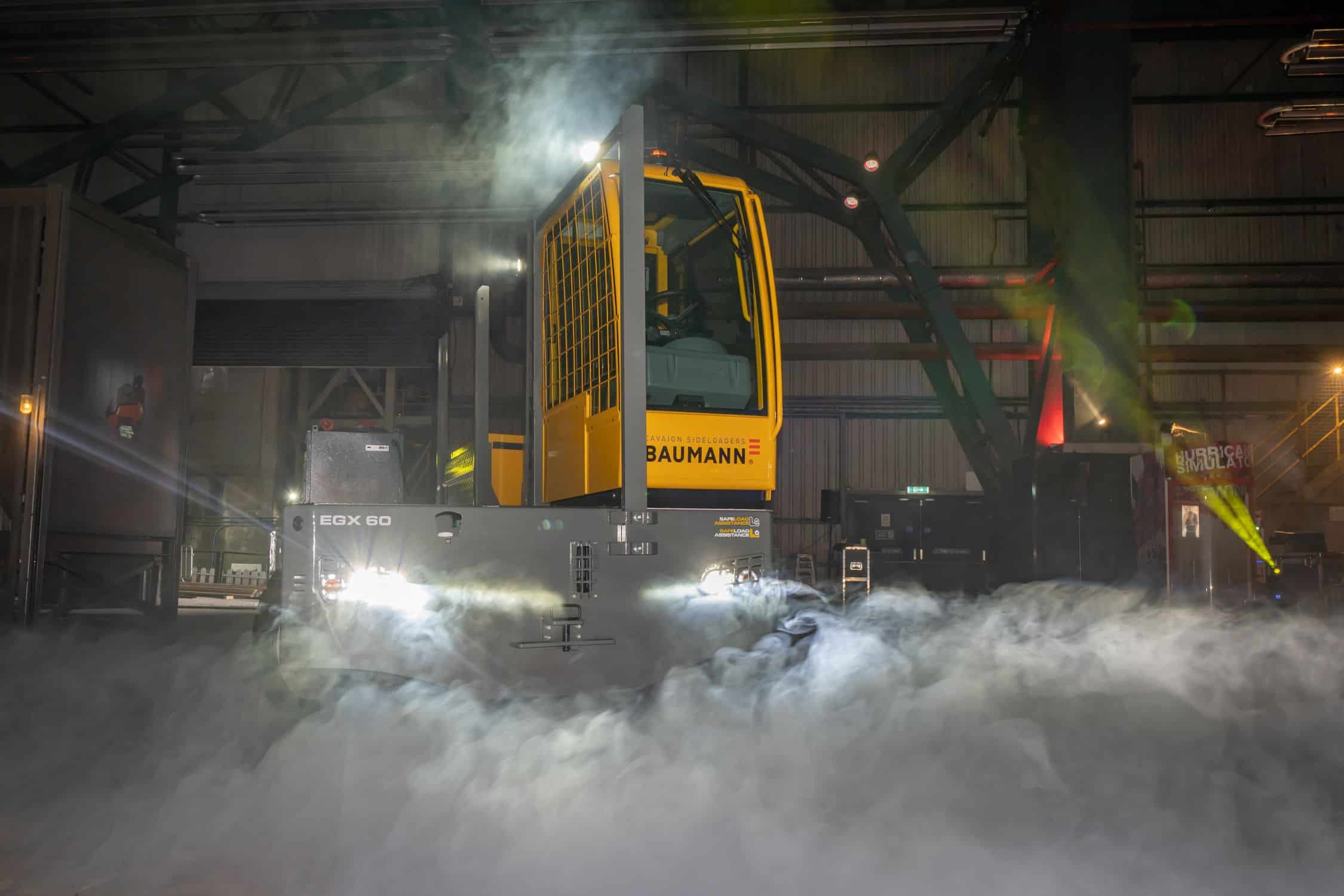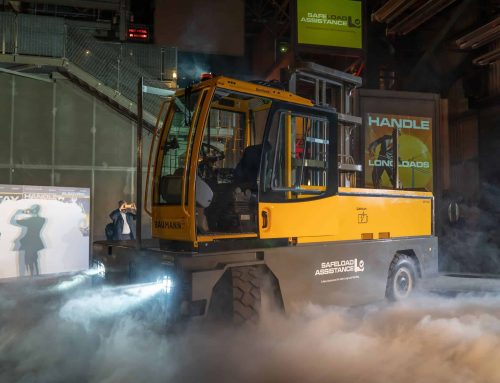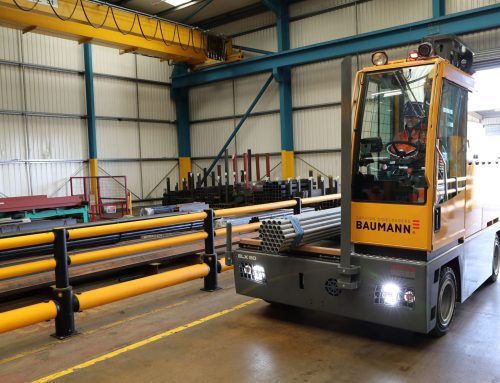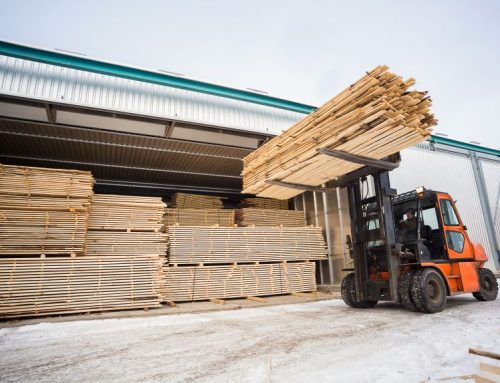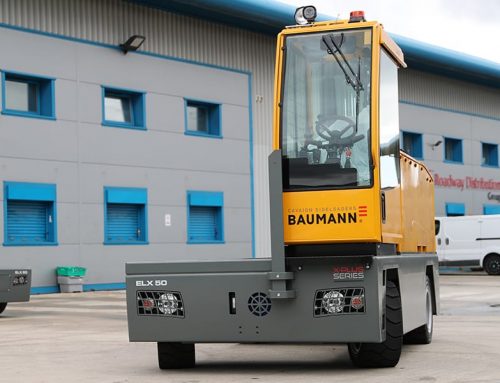Baumann, the world’s leading sideloader manufacturer, is preparing for another record year for deliveries across the UK and Europe, with additional product development and major investment set to make 2023 a pivotal year.
A stream of upgrades for the 3 to 50 tonnes capacity long load handlers has continued to flow from the business in recent months, with higher decks, enlarged cabins, additional outreach within the same sized chassis, and new safety options.
Last year also saw 10% of all Baumann sideloader orders include a pantograph attachment, the highest proportion ever.
The pantograph is a method of extending reach way beyond the truck chassis, facilitating double-row stacking and single-side lorry loading and unloading.
The option of using a pantograph, crossed arms that pivot via one or two pairs of joints, adds efficiency for those wanting to block stack.
“Block stacking in theory adds greater storage density,” says Baumann UK’s Mark Bann, “although in practice it can greatly reduce selectivity and usually ends with uneven rows, thanks to Last In, First Out. With Baumann sideloaders, including our superb electrics, the options are greater than ever.”
When working in blocked stacked aisles, open space is left to access the load behind. The result is a honeycomb effect, with wasted space ‘baked in’. Without storage systems, such as cantilever racking, empty, yet unavailable space (called vertical honeycombing, horizontal honeycombing occurs depth-wise) places further strain on long load handlers.
“Although more popular in Europe, Sideloaders with pantographs are a great way to overcome the issue. Sideloaders reduce wasted aisle space by default, whilst pantographs add the double-deep flexibility.”
Telescopic forks can, and do, do the job, but their rated capacity is typically calculated with the forks retracted.
It means that to handle a load with a weight of, say, 7 tonnes, a fork capacity of perhaps 10 tonnes is needed. That’s a thick fork. With long flexible loads, two sets of forks may be considered along a spreader beam, to share the load capacity and reduce fork thickness, however in that case the pantograph is ultimately a more cost-effective option.
In recent years, Baumann has refined its own pantograph designs to allow the arms to fold in neatly within the frame. That reduces the height and depth of the attachment, keeping any potential lost load capacity to a minimum. In some cases, such as coils or I-beams, the load depth isn’t really an issue, in which case the pantograph offers a very attractive proposition.
